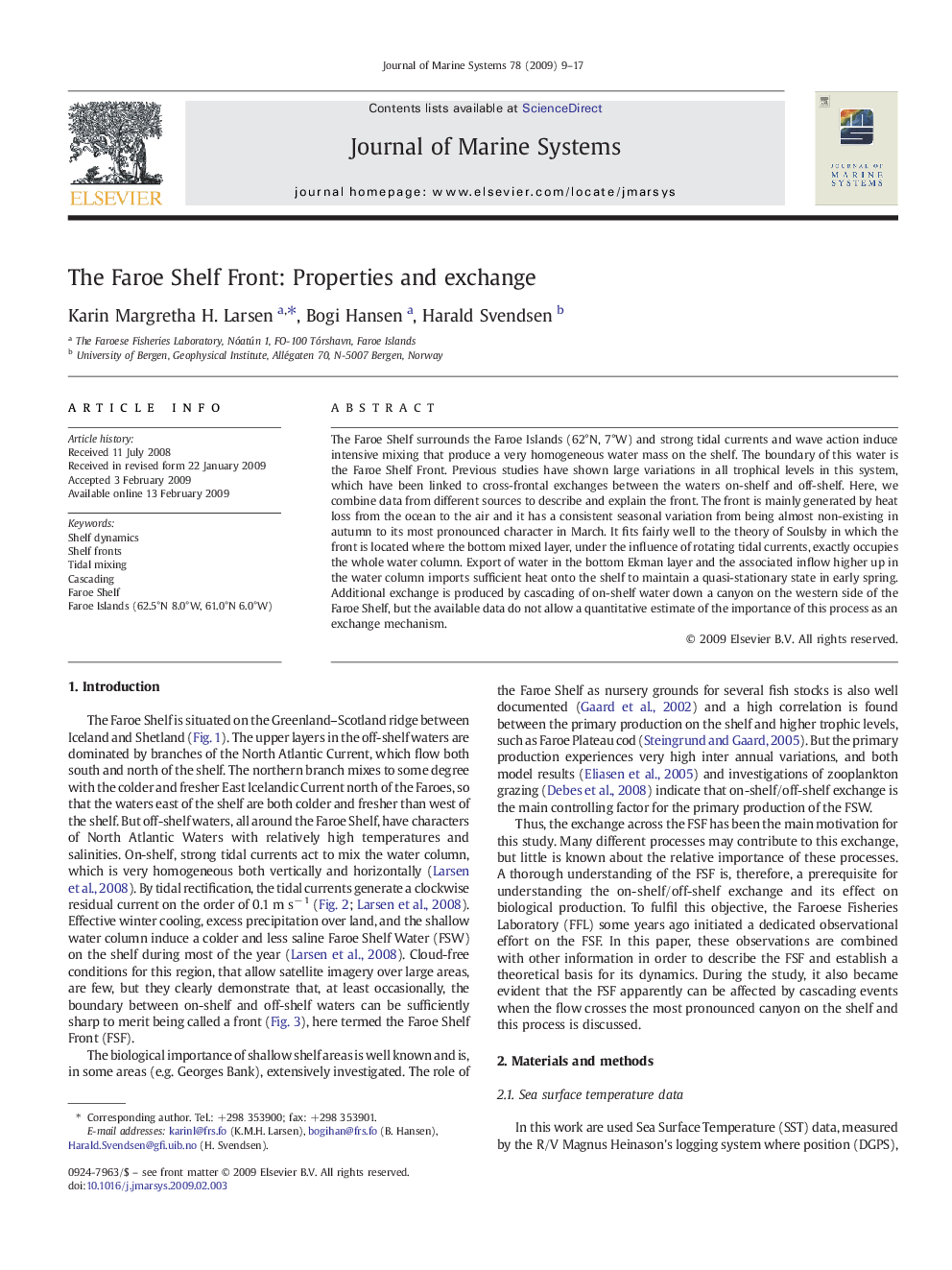| Article ID | Journal | Published Year | Pages | File Type |
|---|---|---|---|---|
| 4548861 | Journal of Marine Systems | 2009 | 9 Pages |
Abstract
The Faroe Shelf surrounds the Faroe Islands (62°N, 7°W) and strong tidal currents and wave action induce intensive mixing that produce a very homogeneous water mass on the shelf. The boundary of this water is the Faroe Shelf Front. Previous studies have shown large variations in all trophical levels in this system, which have been linked to cross-frontal exchanges between the waters on-shelf and off-shelf. Here, we combine data from different sources to describe and explain the front. The front is mainly generated by heat loss from the ocean to the air and it has a consistent seasonal variation from being almost non-existing in autumn to its most pronounced character in March. It fits fairly well to the theory of Soulsby in which the front is located where the bottom mixed layer, under the influence of rotating tidal currents, exactly occupies the whole water column. Export of water in the bottom Ekman layer and the associated inflow higher up in the water column imports sufficient heat onto the shelf to maintain a quasi-stationary state in early spring. Additional exchange is produced by cascading of on-shelf water down a canyon on the western side of the Faroe Shelf, but the available data do not allow a quantitative estimate of the importance of this process as an exchange mechanism.
Related Topics
Physical Sciences and Engineering
Earth and Planetary Sciences
Oceanography
Authors
Karin Margretha H. Larsen, Bogi Hansen, Harald Svendsen,
